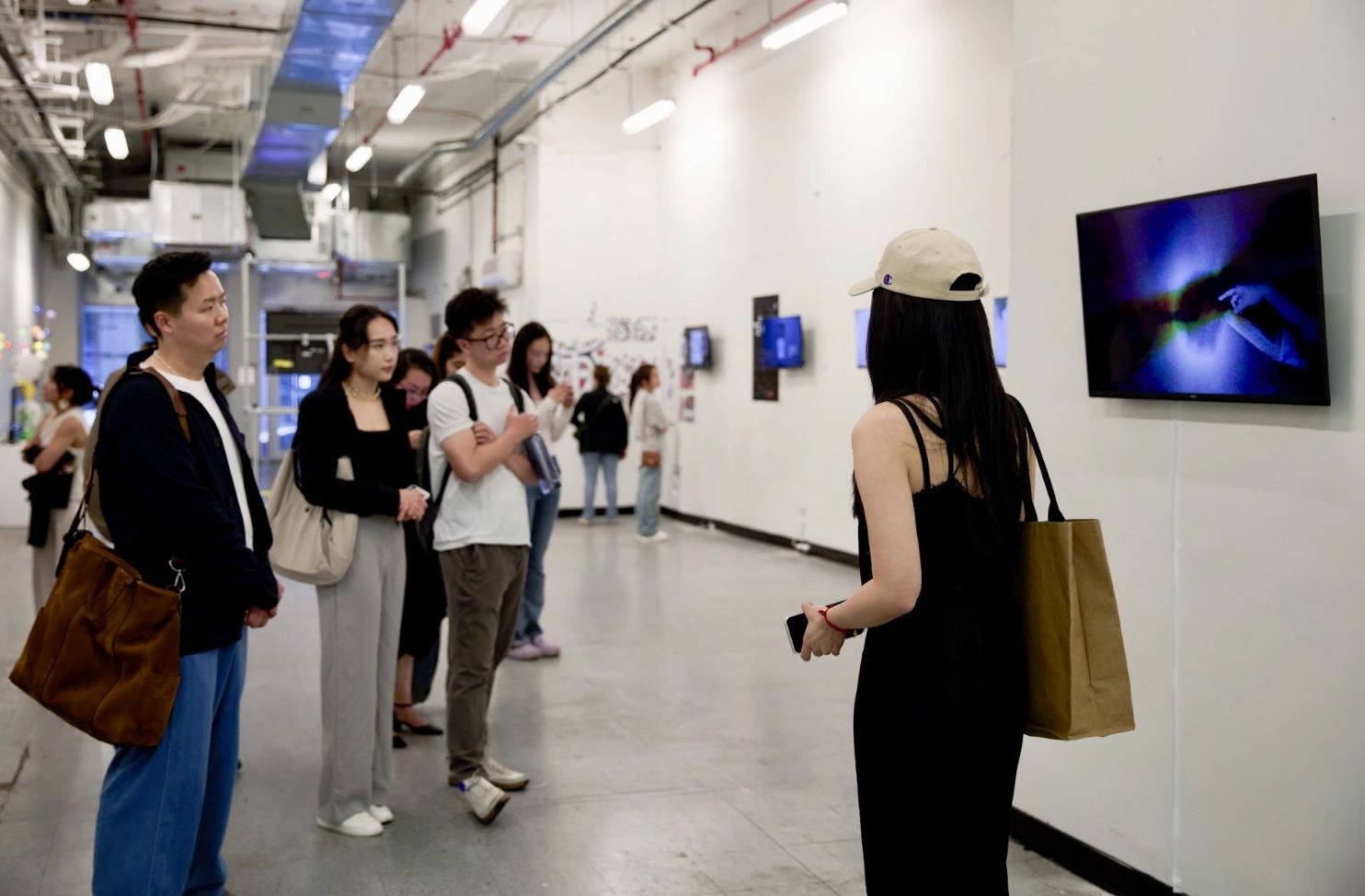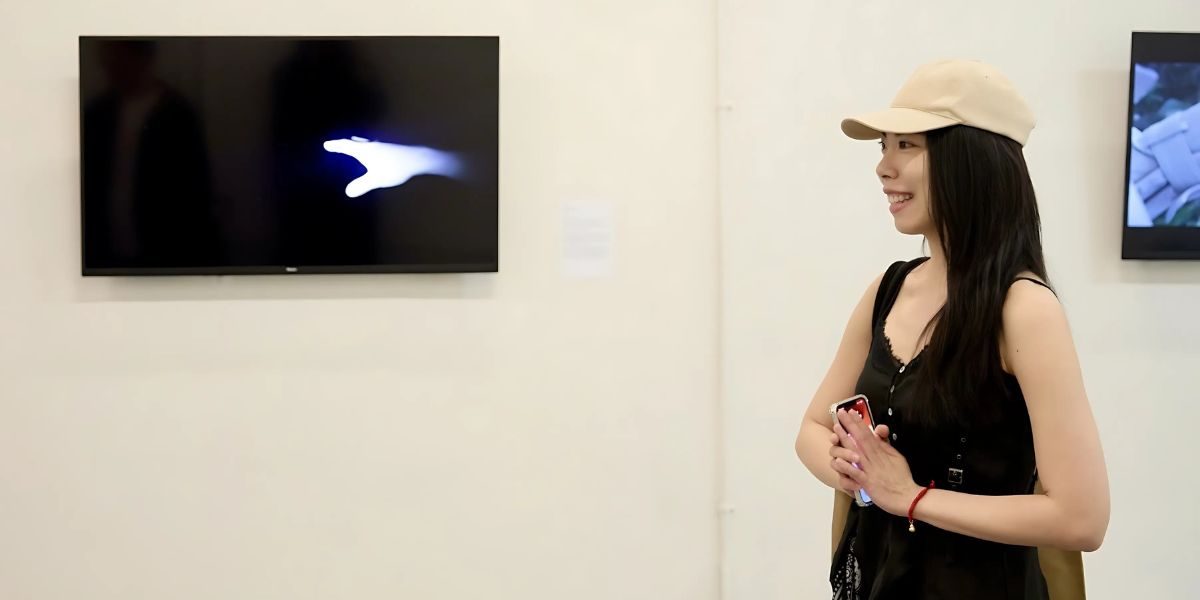As part of the Infinite Weave Exhibition during NYCxDesign Week Festival, experiential designer Si (Sea) Chen presents “Touch,” an audiovisual installation that offers a personal reflection on connection in an era shaped by distance, data, and digital mediation. Si (Sea) Chen is a phygital storyteller crafting experiences that bridge physical, digital, and interactive environments. Rooted in environmental and experiential design, her work includes responsive installations, immersive environments, and audiovisual narratives. She has contributed to experiential design projects for clients such as NEOM, HardRock, and BK Fashion Week. By blending 3D modeling, parametric systems, and real-time audiovisual textures, Chen explores ways to blur the boundaries between physical and digital spaces. Her artistic practice often thrives on cross-disciplinary collaboration with designers, engineers, and broader creative communities.
Displayed from May 16th to 18th, 2025, “Touch” marks a meaningful moment in Chen’s evolving body of work. It is one of her first installations created using TouchDesigner, a visual programming language for real-time audiovisual environments. The installation invites viewers into a dark, cosmic void where a hand gently caresses the stars. Each movement appears to cut through the darkness, triggering streams of light that shift and scatter — a visual metaphor for moments when emotion or presence emerges into awareness.
The gesture of “touch,” subtle yet deliberate, represents an invitation to consider authentic, human interaction in a world shaped by abstraction and digital overload. “In recent years, with the rise of AI, the pandemic, and the overflowed information on social media, I’ve found myself reconsidering my relationship with the people, world and universe,” Chen explains. “ ‘Touch’ emerged from that thinking. It’s about the courage to initiate the connection even when it can bring uncertainty in your life. When screens replace skin, when data takes the place of presence, and when fleeting interactions—like hitting a ‘like’ button—substitute for deeper connections, the act of touch feels increasingly meaningful.”

Though the visuals are digitally rendered, Chen emphasizes that the physicality of the gesture—the hand and its motion—is grounded in the tangible world. During the exhibition, she was asked whether the visuals in “Touch” represent the supernatural or the imagined. Her response was thoughtful: “The only thing real in this piece is the gesture of touch, the touch itself. Everything else is a projection—it can be something imagined, unknown, outer-spaced, dreamed, or hoped for. I wanted to honor that one real act, the touch. I believe that even initiating a small act of connection can invite new possibilities, and that concept shaped how I designed the visuals and motion clips.”
This project also marks the beginning of Chen’s deeper exploration of audiovisual design, integrating technical systems with emotional and sensorial storytelling. Her background in environmental and experiential design informs her process: “I’m always thinking about how cross-disciplinary media can generate unique experience,” she says.
Chen describes herself as a phygital storyteller, crafting meaningful experiences that exist between the physical and digital landscape. Her work often challenges conventional boundaries—between artistic disciplines, between viewer and installation, and between what is perceived and what is felt. Collaboration remains central to her practice, as does a belief in design’s capacity to facilitate connections across people, places, and sensory dimensions.
“In a time when so much is filtered, curated, and mediated, and so little is candid, organic, and direct,” Chen reflects, “what would it mean to simply offer a touch? That’s the question I’m asking—with sound, with light, with space, with movement—and maybe with just a single hand.”
Published by Joseph T.

















